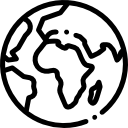The US lymphedema treatment market size is expected to grow from US$ 5,185.98 million in 2022 to US$ 8,320.07 million by 2028; it is estimated to record a CAGR of 8.2% from 2023 to 2028.
The US lymphedema treatment market is segmented based on the condition type, treatment type, end user, and geography. The report offers insights and in-depth market analysis, emphasizing parameters such as drivers, trends, opportunities, and competitive landscape analysis of leading market players across various regions. It also includes analyses of the impact of the COVID-19 pandemic across major regions.
Market Insights
Increasing Healthcare Services and Lymphedema Management Programs Drive US Lymphedema Treatment Market Growth
The Intermountain Healthcare report states that treatment plans are designed for determining the stages and causes of the condition. For example, surgeons performed several reconstructive surgical interventions, including vascularized lymph node transfer, lymphovenous bypass, and a type of liposuction for reducing swelling. Additionally, the non-surgical techniques include complete decongestive therapy (CDT). An NCBI report states that the adoption of Complex Decongestive Physiotherapy (CDP) for treating lymphedema has slightly increased in Europe and the US. Several hospitals are equipped with beds that perform CDP on patients due to satisfactory medical coverage. For instance, the Trustees of the University of Pennsylvania report state that initial treatment of lymphedema comprises CDT. Therefore, Medicare covers physical and occupational therapists (PT/OT) visits with no financial limits on medically necessary services. The patients only will be responsible for 20% pay of the total treatment cost. Also, if the patient has a Medicare supplement, that 20% will be covered.
Customize Research To Suit Your Requirement
We can optimize and tailor the analysis and scope which is unmet through our standard offerings. This flexibility will help you gain the exact information needed for your business planning and decision making.
US Lymphedema Treatment Market: Strategic Insights

Market Size Value in US$ 5,185.98 million in 2022 Market Size Value by US$ 8,320.07 million by 2028 Growth rate CAGR of 8.2% from 2023 to 2028 Forecast Period 2023-2028 Base Year 2022

Mrinal
Have a question?
Mrinal will walk you through a 15-minute call to present the report’s content and answer all queries if you have any.
 Speak to Analyst
Speak to Analyst
Customize Research To Suit Your Requirement
We can optimize and tailor the analysis and scope which is unmet through our standard offerings. This flexibility will help you gain the exact information needed for your business planning and decision making.
US Lymphedema Treatment Market: Strategic Insights

| Market Size Value in | US$ 5,185.98 million in 2022 |
| Market Size Value by | US$ 8,320.07 million by 2028 |
| Growth rate | CAGR of 8.2% from 2023 to 2028 |
| Forecast Period | 2023-2028 |
| Base Year | 2022 |

Mrinal
Have a question?
Mrinal will walk you through a 15-minute call to present the report’s content and answer all queries if you have any.
 Speak to Analyst
Speak to Analyst
New tests, coupled with technological advancements, play a critical role in controlling the prevalence of lymphedema cases among patients. For instance, in May 2021, Inspira Health offered the latest technology for the early detection of lymphedema, a common complication of breast cancer treatment. By utilizing the "ImpediMed SOZO Device," clinicians can detect small changes in the patient's fluid. By utilizing the SOZO device, fluid changes as small as 2.4 tablespoons can be detected, and the scan takes less than one minute to clinically detect lymphedema among patients. This technology is currently adopted and available at Inspira's Mullica Hill and Vineland cancer centers.
On the other hand, the Lymphedema Management Program provides services related to physical and occupational therapists that have been extensively trained in skilled treatment techniques for lymphedema management. For example, MedStar Health has developed a rehabilitation program based on therapists' training and working knowledge of current medical management of primary and secondary lymphedema with rehabilitative needs. Also, services by physical and occupational therapists are brought together for developing a personalized treatment plan for restoring the patient to the highest level of functioning. A major aim of such an innovative rehabilitation program is to educate and instruct patients about self-assist techniques for managing primary and secondary lymphedema independently.
Condition Type-Based Insights
Based on condition type, the US lymphedema treatment market is segmented into primary lymphedema and secondary lymphedema. The secondary lymphedema segment held a larger share of the market in 2022. The primary lymphedema segment is anticipated to register a higher CAGR in the market during the forecast period. Medical procedures involving radiation therapy or lymph node removal for the treatment of cancer, particularly breast cancer, can cause secondary lymphedema in most patients.
The US Lymphedema Treatment Market, by Condition Type – 2022–2028
Treatment Type-Based Insights
Based on treatment type, the US lymphedema treatment market is divided into laser therapy, compression devices and bandaging, drug therapy, physiological procedures, debulking procedures, and others. The physiological procedures segment is further segmented into lymphovenous anastomosis (LVA) and vascularized lymph node transfer (VLNT). Similarly, the debulking procedures segment is subdivided into surgical debulking, liposuction, and others. The compression devices and bandaging segment held the largest share of the market in 2022. The physiological procedure segment is anticipated to register the highest CAGR during the forecast period mainly due to the treatment availability through LVA and VLNT performed on lymphedema patients.
End User-Based Insights
Based on end user, the US lymphedema treatment market is divided into hospitals, clinics, clinical research organizations (CROs), and others (ambulatory care centers and primary care centers). The hospitals segment held the largest share of the market in 2022 and is anticipated to register the highest CAGR in the market during the forecast period due to the launch of several innovative products for maximum utilization in hospitals. In September 2020, Paul Hartmann partnered with Apollo Hospitals Group in India and West China Hospitals with a prime focus on the operation of wound care clinics and ambulances, medical training, and products and services. Such strategic steps provide companies to expand their product portfolio in the market. However, the clinics segment is expected to grow at the fastest rate during the coming years
The US lymphedema treatment market players adopt organic strategies such as product launch and expansion to expand their geographic footprint and product portfolios and meet the growing demands. Inorganic growth strategies adopted by market players allow them to expand their businesses and enhance their geographic presence. Additionally, these growth strategies help companies strengthen their clientele and enlarge their product portfolios.
- In October 2021, HARTMANN USA announced the immediate of TwoPress® 2 Lite. TwoPress® 2 Lite is an extension of our Two Layer Compression Systems. Along with TwoPress® 2, both systems offer simple and convenient application, which help boost clinician and patient confidence.
- In April 2023, AIROS Medical received FDA clearance to market new peristaltic pneumatic compression device, truncal garments for lymphedema treatment. The clearance also allows AIROS to provide larger compression therapy garments including lower truncal garments to treat abdominal swelling.
- In Dec 2020, Tactile Medical has received 510(k) clearance for two new indications for Flexitouch Plus system: phlebolymphedema and lipedema.
Company Profiles
- iHealth Labs Inc
- Oracle Corp
- Lantronix Inc.
- Infosys Ltd
- Digi International Inc.
- Cisco Systems Inc
- Medtronic Plc
- Koninklijke Philips NV
- GE HealthCare Technologies Inc
- Silicon & Software Systems Ltd.

Report Coverage
Revenue forecast, Company Analysis, Industry landscape, Growth factors, and Trends

Segment Covered
Condition Type, Treatment Type, and End User

Regional Scope
North America, Europe, Asia Pacific, Middle East & Africa, South & Central America

Country Scope
This text is related
to country scope.
Frequently Asked Questions
Key factors that are driving the growth of this market are rising incidence of lymphedema cases and increasing healthcare services and lymphedema management programs to boost the market growth for the US lymphedema treatment over the years.
Secondary lymphedema segment held the largest share of the market in the US Lymphedema Treatment market and held the largest market share in 2022.
The CAGR value of the US Lymphedema Treatment market during the forecasted period of 2022-2028 is 8.2%.
Lymphedema involve the accumulation of lymph fluid in fatty tissues just beneath the skin. The condition is caused due to impaired flow in the lymphatic system of a person and is observed either in the legs or arms or in both. It can also be affecting abdomen, neck, genitals, and face of a person, depending on the portion of the body which has undergone treatment. Primary lymphedema is generally present at birth, while secondary lymphedema is caused due to dysfunction or damage to the lymphatic system.
The compression devices and bandaging segment dominated the US Lymphedema Treatment market and held the largest market share in 2022.
Lohmann & Rauscher GmbH & Co. KG and Essity AB are the top two companies that hold huge market shares in the US Lymphedema Treatment market.
The US Lymphedema Treatment market majorly consists of the players such BIOCOMPRESSION SYSTEMS, Tactile Medical, Smith & Nephew, Essity AB, Lohmann & Rauscher GmbH & Co. KG, SIGVARIS GROUP, ThermoTek, Huntleigh Healthcare Limited, 3M, Airos Medical, Paul Hartmann AG, among others .
1. Introduction
1.1 Scope of the Study
1.2 The Insight Partners Research Report Guidance
1.3 Market Segmentation
1.3.1 US Lymphedema Treatment Market – by Condition Type
1.3.2 US Lymphedema Treatment Market – by Treatment Type
1.3.3 US Lymphedema Treatment Market – by End User
2. US Lymphedema Treatment Market – Key Takeaways
3. Research Methodology
3.1 Coverage
3.2 Secondary Research
3.3 Primary Research
4. Lymphedema Treatment Market – Market Landscape
4.1 Overview
4.2 Experts’ Opinion
5. Lymphedema Treatment Market – Key Market Dynamics
5.1 Market Drivers
5.1.1 Rising Incidence of Lymphedema Cases
5.1.2 Increasing Healthcare Services and Lymphedema Management Programs
5.2 Market Restraints
5.2.1 Lack of Awareness and Skilled Professionals
5.3 Market Opportunities
5.3.1 Rising Treatment Options
5.4 Future Trends
5.4.1 Use of Robotics for Lymphedema Treatment
5.5 Impact Analysis
6. US Lymphedema Treatment Market Analysis
6.1 US Lymphedema Treatment Market Revenue Forecast and Analysis
6.1.1 Market Positioning of Key Players in US Lymphedema Treatment Market
6.2 US Lymphedema Treatment Market, By Company Products
6.2.1 US Lymphedema Treatment Market for Flat-Knit Compression Garments (Sleeves), by Key Market Players (2021)
6.2.2 US Lymphedema Treatment Market for Round-Knit Compression Garments (Sleeves), by Key Market Players (2021)
7. US Lymphedema Treatment Market Analysis – by Condition Type
7.1 Overview
7.2 Primary Lymphedema
7.2.1 Overview
7.2.2 Primary Lymphedema: US Lymphedema Treatment Market – Revenue and Forecast to 2028 (US$ Million)
7.3 Secondary Lymphedema
7.3.1 Overview
7.3.2 Secondary Lymphedema: US Lymphedema Treatment Market – Revenue and Forecast to 2028 (US$ Million)
8. US Lymphedema Treatment Market Analysis – by Treatment Type
8.1 Overview
8.2 Laser Therapy
8.2.1 Overview
8.2.2 Laser Therapy: US Lymphedema Treatment Market– Revenue and Forecast to 2028 (US$ Million)
8.3 Compression Devices and Bandaging
8.3.1 Overview
8.3.2 Compression Devices and Bandaging: US Lymphedema Treatment Market – Revenue and Forecast to 2028 (US$ Million)
8.3.3 Compression Bandages
8.3.3.1 Overview
8.3.3.2 Compression Bandages: US Lymphedema Treatment Market – Revenue and Forecast to 2028 (US$ Million)
8.3.4 Compression Garments (Including Stockings)
8.3.4.1 Overview
8.3.4.2 Compression Garments (Including Stockings): US Lymphedema Treatment Market – Revenue and Forecast to 2028 (US$ Million)
8.3.4.3 Flat-Knit Compression Garments (Sleeves)
8.3.4.3.1 Overview
8.3.4.3.2 Flat-Knit Compression Garments (Sleeves): US Lymphedema Treatment Market – Revenue and Forecast to 2028 (US$ Million)
8.3.4.4 Round-Knit Compression Garments (Sleeves)
8.3.4.4.1 Overview
8.3.4.4.2 Round-Knit Compression Garments (Sleeves): US Lymphedema Treatment Market – Revenue and Forecast to 2028 (US$ Million)
8.3.4.5 Others
8.3.4.5.1 Overview
8.3.4.5.2 Others: US Lymphedema Treatment Market – Revenue and Forecast to 2028 (US$ Million)
8.3.5 Intermittent Pneumatic Compression (IPC)
8.3.5.1 Overview
8.3.5.2 Intermittent Pneumatic Compression (IPC): US Lymphedema Treatment Market – Revenue and Forecast to 2028 (US$ Million)
8.4 Drug Therapy
8.4.1 Overview
8.4.2 Drug Therapy: US Lymphedema Treatment Market – Revenue and Forecast to 2028 (US$ Million)
8.5 Physiological Procedures
8.5.1 Overview
8.5.2 Physiological Procedures: US Lymphedema Treatment Market – Revenue and Forecast to 2028 (US$ Million)
8.5.3 Lymphovenous Anastomosis (LVA)
8.5.3.1 Overview
8.5.3.2 Lymphovenous Anastomosis (LVA): US Lymphedema Treatment Market – Revenue and Forecast to 2028 (US$ Million)
8.5.4 Vascularized Lymph Node Transfer (VLNT)
8.5.4.1 Overview
8.5.4.2 Vascularized Lymph Node Transfer (VLNT): US Lymphedema Treatment Market – Revenue and Forecast to 2028 (US$ Million)
8.6 Debulking Procedures
8.6.1 Overview
8.6.2 Debulking Procedures: US Lymphedema Treatment Market – Revenue and Forecast to 2028 (US$ Million)
8.6.3 Surgical Debulking
8.6.3.1 Overview
8.6.3.2 Surgical Debulking: US Lymphedema Treatment Market – Revenue and Forecast to 2028 (US$ Million)
8.6.4 Liposuction
8.6.4.1 Overview
8.6.4.2 Liposuction: US Lymphedema Treatment Market – Revenue and Forecast to 2028 (US$ Million)
8.6.5 Others
8.6.5.1 Overview
8.6.5.2 Others: US Lymphedema Treatment Market – Revenue and Forecast to 2028 (US$ Million)
8.7 Others
8.7.1 Overview
8.7.2 Others: US Lymphedema Treatment Market – Revenue and Forecast to 2028 (US$ Million)
9. US Lymphedema Treatment Market Analysis – by End User
9.1 Overview
9.2 Hospitals
9.2.1 Overview
9.2.2 Hospitals: US Lymphedema Treatment Market – Revenue and Forecast to 2028 (US$ Million)
9.3 Clinics
9.3.1 Overview
9.3.2 Clinics: US Lymphedema Treatment Market – Revenue and Forecast to 2028 (US$ Million)
9.4 Clinical Research Organization
9.4.1 Overview
9.4.2 Clinical Research Organization: US Lymphedema Treatment Market – Revenue and Forecast to 2028 (US$ Million)
9.5 Others
9.5.1 Overview
9.5.2 Others: US Lymphedema Treatment Market – Revenue and Forecast to 2028 (US$ Million)
10. US Lymphedema Treatment Market
10.1 Overview
10.1.1 US Lymphedema Treatment Market – Revenue and Forecast to 2028 (US$ Million)
10.1.1.1 US: Lymphedema Treatment Market, by Condition Type, 2019–2028 (USD Million)
10.1.1.2 US: Lymphedema Treatment Market, by Treatment Type, 2019–2028 (USD Million)
10.1.1.2.1 US: Lymphedema Treatment Market, by Compression Devices and Bandaging, 2019–2028 (USD Million)
10.1.1.2.1.1 US: Lymphedema Treatment Market, by Compression Garments (including stockings), 2019–2028 (USD Million)
10.1.1.2.2 US: Lymphedema Treatment Market, by Physiological Procedures, 2019–2028 (USD Million)
10.1.1.2.3 US: Lymphedema Treatment Market, by Debulking Procedures, 2019–2028 (USD Million)
10.1.1.3 US: Lymphedema Treatment Market, by End User, 2019–2028 (USD Million)
11. US Lymphedema Treatment Market: Impact Assessment of COVID-19 Pandemic
11.1 Impact Analysis of COVID-19 Pandemic on US Lymphedema Treatment Market
12. US Lymphedema Treatment Market–Industry Landscape
12.1 Overview
12.2 Organic Developments
12.2.1 Overview
13. Company Profiles
13.1 BIOCOMPRESSION SYSTEMS
13.1.1 Key Facts
13.1.2 Business Description
13.1.3 Products and Services
13.1.4 Financial Overview
13.1.5 SWOT Analysis
13.1.6 Key Developments
13.2 Tactile Medical
13.2.1 Key Facts
13.2.2 Business Description
13.2.3 Products and Services
13.2.4 Financial Overview
13.2.5 SWOT Analysis
13.2.6 Key Developments
13.3 Essity AB
13.3.1 Key Facts
13.3.2 Business Description
13.3.3 Products and Services
13.3.4 Financial Overview
13.3.5 SWOT Analysis
13.3.6 Key Developments
13.4 Lohmann & Rauscher GmbH & Co. KG
13.4.1 Key Facts
13.4.2 Business Description
13.4.3 Products and Services
13.4.4 Financial Overview
13.4.5 SWOT Analysis
13.4.6 Key Developments
13.5 SIGVARIS GROUP
13.5.1 Key Facts
13.5.2 Business Description
13.5.3 Products and Services
13.5.4 Financial Overview
13.5.5 SWOT Analysis
13.6 ThermoTek Inc
13.6.1 Key Facts
13.6.2 Business Description
13.6.3 Products and Services
13.6.4 Financial Overview
13.6.5 SWOT Analysis
13.6.6 Key Developments
13.7 Huntleigh Healthcare Limited
13.7.1 Key Facts
13.7.2 Business Description
13.7.3 Products and Services
13.7.4 Financial Overview
13.7.5 SWOT Analysis
13.7.6 Key Developments
13.8 3M Co
13.8.1 Key Facts
13.8.2 Business Description
13.8.3 Products and Services
13.8.4 Financial Overview
13.8.5 SWOT Analysis
13.8.6 Key Developments
13.9 AIROS Medical
13.9.1 Key Facts
13.9.2 Business Description
13.9.3 Products and Services
13.9.4 Financial Overview
13.9.5 SWOT Analysis
13.9.6 Key Developments
13.10 PAUL HARTMANN AG
13.10.1 Key Facts
13.10.2 Business Description
13.10.3 Products and Services
13.10.4 Financial Overview
13.10.5 SWOT Analysis
13.10.6 Key Developments
14. Appendix
14.1 About The Insight Partners
14.2 Glossary of Terms
LIST OF TABLES
Table 1. Summary of Coverage, Utilization, and Cost Effect of AB 213
Table 2. US Lymphedema Treatment Market, by Condition Type– Revenue and Forecast to 2028 (USD Million)
Table 3. US Lymphedema Treatment Market, by Treatment Type– Revenue and Forecast to 2028 (USD Million)
Table 4. US Lymphedema Treatment Market, by Compression Devices and Bandaging – Revenue and Forecast to 2028 (USD Million)
Table 5. US Lymphedema Treatment Market, by Compression Garments (including stockings) – Revenue and Forecast to 2028 (USD Million)
Table 6. US Lymphedema Treatment Market, by Physiological Procedures – Revenue and Forecast to 2028 (USD Million)
Table 7. US Lymphedema Treatment Market, by Debulking Procedures – Revenue and Forecast to 2028 (USD Million)
Table 8. US Lymphedema Treatment Market, by End User – Revenue and Forecast to 2028 (USD Million)
Table 9. Organic Developments in the US Lymphedema Treatment Market
Table 10. Glossary of Terms
LIST OF FIGURES
Figure 1. Lymphedema Treatment Market Segmentation
Figure 2. US Lymphedema Treatment Market Overview
Figure 3. Compression Devices and Bandaging Segment Held Largest Share Under Treatment Type in Lymphedema Treatment Market
Figure 4. Impact Analysis of Drivers and Restraints for Lymphedema Treatment Market
Figure 5. US Lymphedema Treatment Market – Revenue Forecast and Analysis – 2020–2028
Figure 6. US Lymphedema Treatment Market, by Product, 2022 & 2028 (%)
Figure 7. Primary Lymphedema: US Lymphedema Treatment Market – Revenue and Forecast to 2028 (US$ Million)
Figure 8. Secondary Lymphedema: US Lymphedema Treatment Market – Revenue and Forecast to 2028 (US$ Million)
Figure 9. US Lymphedema Treatment Market, by Treatment Type, 2022 & 2028 (%)
Figure 10. Laser Therapy: US Lymphedema Treatment Market – Revenue and Forecast to 2028 (US$ Million)
Figure 11. Compression Devices and Bandaging: US Lymphedema Treatment Market – Revenue and Forecast to 2028 (US$ Million)
Figure 12. Compression Bandages: US Lymphedema Treatment Market – Revenue and Forecast to 2028 (US$ Million)
Figure 13. Compression Garments (Including Stockings): US Lymphedema Treatment Market – Revenue and Forecast to 2028 (US$ Million)
Figure 14. Flat-Knit Compression Garments (Sleeves): US Lymphedema Treatment Market – Revenue and Forecast to 2028 (US$ Million)
Figure 15. Round-Knit Compression Garments (Sleeves): US Lymphedema Treatment Market – Revenue and Forecast to 2028 (US$ Million)
Figure 16. Others: US Lymphedema Treatment Market – Revenue and Forecast to 2028 (US$ Million)
Figure 17. Intermittent Pneumatic Compression (IPC): US Lymphedema Treatment Market – Revenue and Forecast to 2028 (US$ Million)
Figure 18. Drug Therapy: US Lymphedema Treatment Market – Revenue and Forecast to 2028 (US$ Million)
Figure 19. Physiological Procedures: US Lymphedema Treatment Market – Revenue and Forecast to 2028 (US$ Million)
Figure 20. Lymphovenous Anastomosis (LVA): US Lymphedema Treatment Market – Revenue and Forecast to 2028 (US$ Million)
Figure 21. Vascularized Lymph Node Transfer (VLNT): US Lymphedema Treatment Market – Revenue and Forecast to 2028 (US$ Million)
Figure 22. Debulking Procedures: US Lymphedema Treatment Market – Revenue and Forecast to 2028 (US$ Million)
Figure 23. Surgical Debulking: US Lymphedema Treatment Market – Revenue and Forecast to 2028 (US$ Million)
Figure 24. Liposuction: US Lymphedema Treatment Market – Revenue and Forecast to 2028 (US$ Million)
Figure 25. Others: US Lymphedema Treatment Market – Revenue and Forecast to 2028 (US$ Million)
Figure 26. Others: US Lymphedema Treatment Market – Revenue and Forecast to 2028 (US$ Million)
Figure 27. US Lymphedema Treatment Market, by Application, 2022 & 2028 (%)
Figure 28. Hospitals: US Lymphedema Treatment Market – Revenue and Forecast to 2028 (US$ Million)
Figure 29. Clinics: US Lymphedema Treatment Market – Revenue and Forecast to 2028 (US$ Million)
Figure 30. Clinical Research Organization: US Lymphedema Treatment Market – Revenue and Forecast to 2028 (US$ Million)
Figure 31. Others: US Lymphedema Treatment Market – Revenue and Forecast to 2028 (US$ Million)
Figure 32. US Lymphedema Treatment Market – Revenue and Forecast to 2028 (US$ Million)
Figure 33. Impact of COVID-19 Pandemic in the US Market
The List of Companies - US Lymphedema Treatment Market
- BIOCOMPRESSION SYSTEMS
- Tactile Medical
- Smith & Nephew
- Essity AB
- Lohmann & Rauscher GmbH & Co. KG
- SIGVARIS GROUP
- ThermoTek
- Huntleigh Healthcare Limited
- 3M
- Airos Medical, Paul Hartmann AG
The Insight Partners performs research in 4 major stages: Data Collection & Secondary Research, Primary Research, Data Analysis and Data Triangulation & Final Review.
- Data Collection and Secondary Research:
As a market research and consulting firm operating from a decade, we have published many reports and advised several clients across the globe. First step for any study will start with an assessment of currently available data and insights from existing reports. Further, historical and current market information is collected from Investor Presentations, Annual Reports, SEC Filings, etc., and other information related to company’s performance and market positioning are gathered from Paid Databases (Factiva, Hoovers, and Reuters) and various other publications available in public domain.
Several associations trade associates, technical forums, institutes, societies and organizations are accessed to gain technical as well as market related insights through their publications such as research papers, blogs and press releases related to the studies are referred to get cues about the market. Further, white papers, journals, magazines, and other news articles published in the last 3 years are scrutinized and analyzed to understand the current market trends.
- Primary Research:
The primarily interview analysis comprise of data obtained from industry participants interview and answers to survey questions gathered by in-house primary team.
For primary research, interviews are conducted with industry experts/CEOs/Marketing Managers/Sales Managers/VPs/Subject Matter Experts from both demand and supply side to get a 360-degree view of the market. The primary team conducts several interviews based on the complexity of the markets to understand the various market trends and dynamics which makes research more credible and precise.
A typical research interview fulfils the following functions:
- Provides first-hand information on the market size, market trends, growth trends, competitive landscape, and outlook
- Validates and strengthens in-house secondary research findings
- Develops the analysis team’s expertise and market understanding
Primary research involves email interactions and telephone interviews for each market, category, segment, and sub-segment across geographies. The participants who typically take part in such a process include, but are not limited to:
- Industry participants: VPs, business development managers, market intelligence managers and national sales managers
- Outside experts: Valuation experts, research analysts and key opinion leaders specializing in the electronics and semiconductor industry.
Below is the breakup of our primary respondents by company, designation, and region:

Once we receive the confirmation from primary research sources or primary respondents, we finalize the base year market estimation and forecast the data as per the macroeconomic and microeconomic factors assessed during data collection.
- Data Analysis:
Once data is validated through both secondary as well as primary respondents, we finalize the market estimations by hypothesis formulation and factor analysis at regional and country level.
- 3.1 Macro-Economic Factor Analysis:
We analyse macroeconomic indicators such the gross domestic product (GDP), increase in the demand for goods and services across industries, technological advancement, regional economic growth, governmental policies, the influence of COVID-19, PEST analysis, and other aspects. This analysis aids in setting benchmarks for various nations/regions and approximating market splits. Additionally, the general trend of the aforementioned components aid in determining the market's development possibilities.
- 3.2 Country Level Data:
Various factors that are especially aligned to the country are taken into account to determine the market size for a certain area and country, including the presence of vendors, such as headquarters and offices, the country's GDP, demand patterns, and industry growth. To comprehend the market dynamics for the nation, a number of growth variables, inhibitors, application areas, and current market trends are researched. The aforementioned elements aid in determining the country's overall market's growth potential.
- 3.3 Company Profile:
The “Table of Contents” is formulated by listing and analyzing more than 25 - 30 companies operating in the market ecosystem across geographies. However, we profile only 10 companies as a standard practice in our syndicate reports. These 10 companies comprise leading, emerging, and regional players. Nonetheless, our analysis is not restricted to the 10 listed companies, we also analyze other companies present in the market to develop a holistic view and understand the prevailing trends. The “Company Profiles” section in the report covers key facts, business description, products & services, financial information, SWOT analysis, and key developments. The financial information presented is extracted from the annual reports and official documents of the publicly listed companies. Upon collecting the information for the sections of respective companies, we verify them via various primary sources and then compile the data in respective company profiles. The company level information helps us in deriving the base number as well as in forecasting the market size.
- 3.4 Developing Base Number:
Aggregation of sales statistics (2020-2022) and macro-economic factor, and other secondary and primary research insights are utilized to arrive at base number and related market shares for 2022. The data gaps are identified in this step and relevant market data is analyzed, collected from paid primary interviews or databases. On finalizing the base year market size, forecasts are developed on the basis of macro-economic, industry and market growth factors and company level analysis.
- Data Triangulation and Final Review:
The market findings and base year market size calculations are validated from supply as well as demand side. Demand side validations are based on macro-economic factor analysis and benchmarks for respective regions and countries. In case of supply side validations, revenues of major companies are estimated (in case not available) based on industry benchmark, approximate number of employees, product portfolio, and primary interviews revenues are gathered. Further revenue from target product/service segment is assessed to avoid overshooting of market statistics. In case of heavy deviations between supply and demand side values, all thes steps are repeated to achieve synchronization.
We follow an iterative model, wherein we share our research findings with Subject Matter Experts (SME’s) and Key Opinion Leaders (KOLs) until consensus view of the market is not formulated – this model negates any drastic deviation in the opinions of experts. Only validated and universally acceptable research findings are quoted in our reports.
We have important check points that we use to validate our research findings – which we call – data triangulation, where we validate the information, we generate from secondary sources with primary interviews and then we re-validate with our internal data bases and Subject matter experts. This comprehensive model enables us to deliver high quality, reliable data in shortest possible time.


 Get Free Sample For
Get Free Sample For